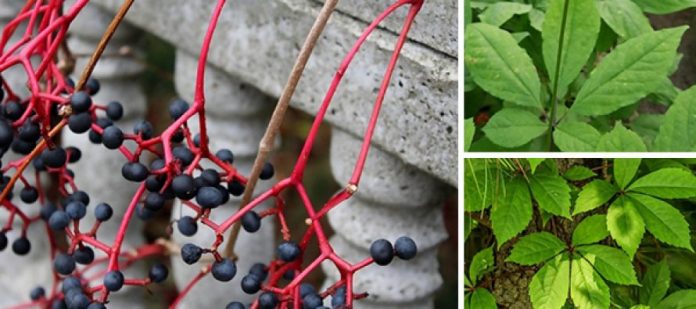Inexperienced foragers may have difficulty distinguishing the good American Ginseng plant from the toxic Virginia Creeper. The two plants have a lot in common, so we’re going to analyze both species, explaining the differences so you can accurately tell them apart.
American Ginseng
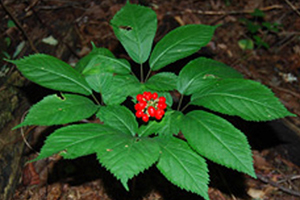
American Ginseng is a perennial native of the eastern United States, also known as Panax ginseng.
This is hardy in USDA zones 4 to 8, but has been extensively cultivated and is a critically endangered species at present. It prefers shady spots with moist, nutrient rich soil.
Related: 5 Home Remedies for Diarrhea
Virginia Creeper
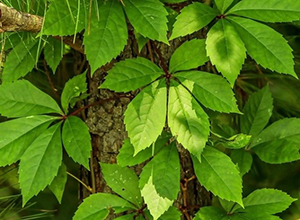
In the eastern United States, the Virginia creeper, also known as the Parthenocissus quinquefolia, grows as a deciduous woody vine.
In USDA zones 3 to 9 it is hardy. In wooded areas and ravines it thrives, and can be invasive. Virginia creeper grows in a large array of conditions.
Growth Habits of the Plants
The plants’ growth habits are somewhat different. Ginseng grows low to the ground, reaching a height of 10 to 15 inches and clustering in forest and rocky areas. The prongs of the leaf are straight, but not branching.
Virginia creeper, on the other hand, is a climbing vine that uses tendrils to reach surfaces and other plants. Virginia creeper grows up to 50 feet in length, spreading or climbing on trees, walls, fences and other vertical surfaces along the land.
Use caution when identifying plants. When Virginia creeper has nothing to climb on, it grows along the ground and can look like American ginseng.
Related: Foraging for Edible Wild Plants
Leaves
Both plants belong to family Ivy. They have similar, oblong and toothed leaves.
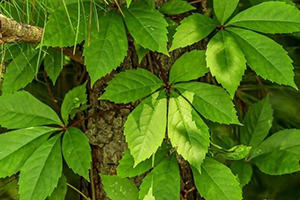
The leaflets of the Virginia creeper are smaller, and the teeth do not extend around the leaflet base. The leaves in the middle are also small.
American ginseng leaf serrations stretch around the entire leaf, and the serrations are smaller. Generally, the leaves are slimmer and the broadest near the tip.
There are also different leaf attachments, with the ginseng leaflets emerging from petioles that connect to the central stem. Virginia creeper leaflets sprout from the center point and directly connect to the stem.
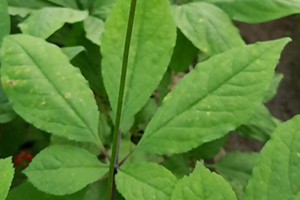
All styles of leaves are compound, each with five leaflets. The leaves of ginseng grow in clusters of 3 or more compound leaves, while the leaves of the Virginia creeper grow singly. The Virginia creeper’s five leaflets are nearly equal in size, while the ginseng leaflets are composed of three larger leaflets in the middle and one smaller leaflet on each side.
The distinction in fall is very noticeable when the Virginia creeper’s leaves turn bright red, while the American ginseng leaves turn black.
Related: 52 Plants In The Wild You Can Eat
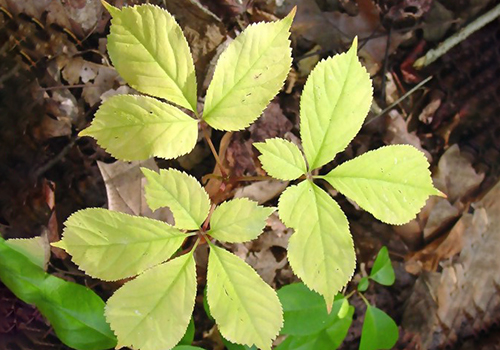
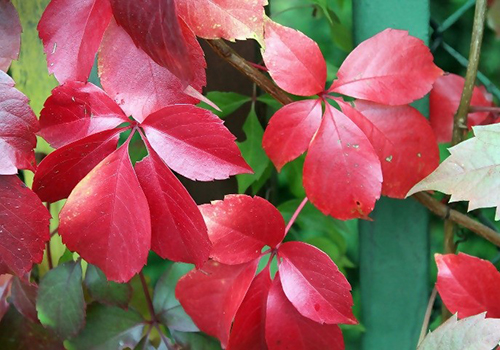
Some people are annoyed by Virginia creeper’s leaves but not everyone is immune to the herb.
Berries
The fruits mature in the middle to late summer, and are particularly evident in fall. Virginia’s dark blue or black creeper berries are poisonous, and can be fatal when eaten. The birds like them, but tell the kids to stay away. In comparison, ginseng produces red berries.

American ginseng has many medicinal uses and is a valuable plant. It has been over-harvested because of this and is considered endangered in several nations. If you see a plant you think is American ginseng, you have to be careful to verify its identity.
Wild ginseng harvesting is legal but only during certain times, usually in fall. Search for more information on your State laws. The mature berries should be planted by ginseng hunters whenever found. This practice will help bring this precious plant back to life.
American ginseng grows well to full shade in your garden, with rich soil and partial shade. A good piece of rootstock or seed helps the plant grow. The seeds take a long time, up to two years to germinate.
Related: 16 Free Alternative Pain Meds
Harvesting American Ginseng
When harvesting, look for mature plants with at least four sets of compound leaves. Younger roots are too small. Follow these rules when digging ginseng:
- Know the laws in your area
- Only harvest mature plants
- Harvest ginseng in the fall after the seeds turn dark red
- Dig carefully, keeping the roots intact
- Plant all the berries to grow new plants
By harvesting carefully, you assure that the species survives and thrives for future generations.


